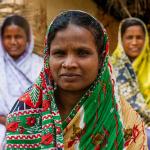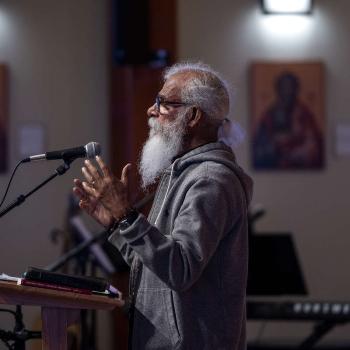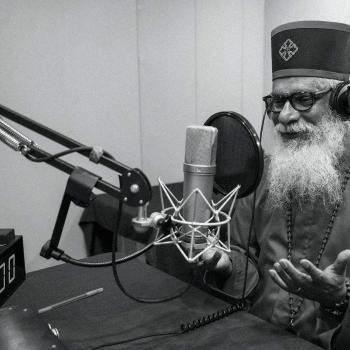WILLS POINT, TX – Gospel for Asia (GFA) issues an extensive Special Report on illiteracy, the dominant disabler to flourishing for millions around the world, and the miraculous potential of literacy that is able to change the lives of men, women and children for generations.
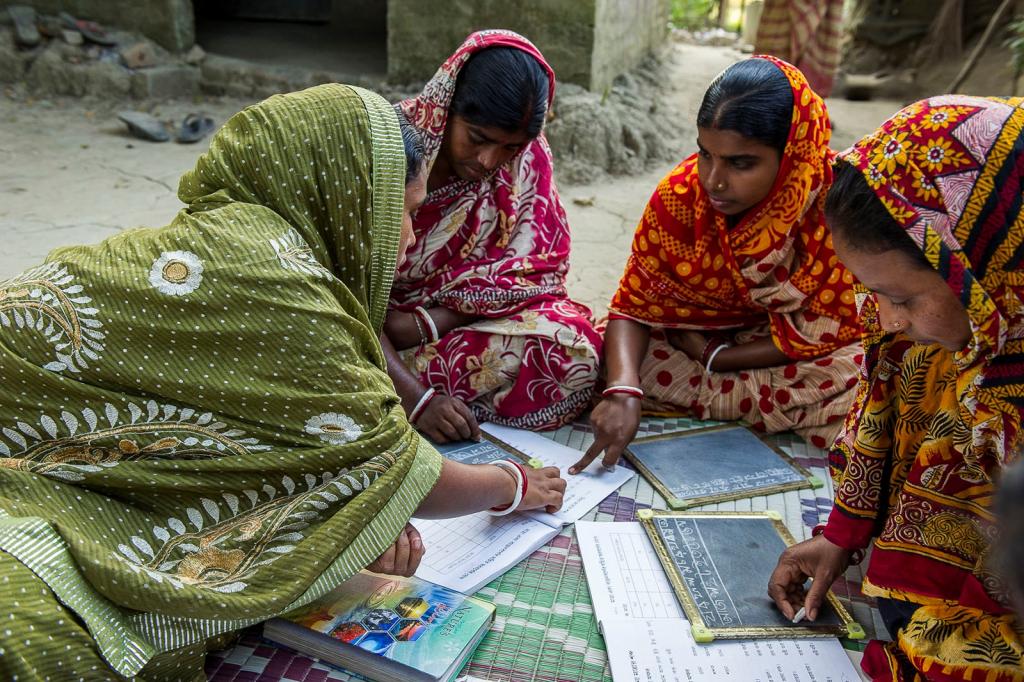
Illiteracy in the United States
Perhaps it is easier to examine literacy and illiteracy through the lens of one country, the one many of us know best and consider one of the most literate in the world.
ProLiteracy, a nonprofit that champions the power of literacy to improve the lives of adults and their families, communities and societies in the United States (and around the world), views illiteracy mostly through the lens of those who are foreign-born residents. The Center for Applied Linguistics reports that in 2006, some 13 years ago, there were 37.5 million foreign-born residents, or 12.5 percent of the total U.S. population.
Since that data was collected, there has been a surge in states that aren’t normally considered high foreign population centers such as California, Texas, New York and Florida. The Center for Applied Linguistics also reports that since 2005, some 14 other states experienced a 30 percent greater increase in foreign-born residency.
36 million
adults in the U.S. cannot read, write, or do basic math above a third-grade level
They also state that the ESL (English as Second Language) population in the United States is diverse in terms of country of origin, education and individual language skills. In addition to Mexico and other Latin American countries, a growing number of non-native speakers of English come from China, the Philippines, India, Vietnam, Korea, Eastern Europe and African countries. Of these residents born outside the United States, 68 percent have a high school diploma in their native country or the U.S.
With all this in mind, consider these additional facts on adult literacy in the U.S.:
- “36 million adults cannot read, write, or do basic math above a third-grade level.
- “68 percent of programs are struggling with long student waiting lists, and less than 10 percent of adults in need are receiving services.
- “Children whose parents have low literacy levels have a 72 percent chance of being at the lowest reading levels themselves. These children are more likely to get poor grades, display behavioral problems, have high absentee rates, repeat school years, or drop out.
- “One in six young adults—more than 1.2 million—drop out of high school every year.
- “2 million immigrants come to the U.S. each year, and about 50 percent of them lack high-school education and proficient English language skills
- “Low literacy costs the U.S. $225 billion or more each year in non-productivity in the workforce, crime, and loss of tax revenue due to unemployment.
- “43 percent of adults with lowest literacy levels live in poverty.
- “$232 billion a year in health care costs is linked to low adult literacy skills.
- “75 percent of state prison inmates did not complete high school or can be classified as low literate.”
According to the Barbara Bush Foundation for Family Literacy in the United States, research shows that the single greatest indicator of a child’s future success is the literacy level of his or her parents:
- “A child from a highly educated family will experience 30 million more words by the age of three than a child from a low-literate home.
- “Almost half of all children born to a mother lacking a high school diploma are not ready to start kindergarten.
- “Students who do not read proficiently by the third grade are four times more likely to leave high school without a diploma.”
Literacy Efforts Around the World
The same results are evident in round-the-world data with many organizations working intensively to combat illiteracy. World Vision Ethiopia (WVE), for instance, is celebrating this year’s International Literacy Day with a campaign aimed at halting an alarming global trend: that of children graduating from primary school with reading deficiencies in their own mother tongue. Programs that emphasize reading proficiencies in five core reading skills are being implemented throughout 57 child-sponsorship Area Programs. Consequently, some 4,203 reading camps have been established across the Ethiopian nation. Nearly 1.5 million children are achieving reading and writing literacy in these camps; even more remarkable is that more than 15,000 youth are volunteering at these camps, helping serve not only children but also children’s parents.
Room to Read is a global non profit promoting literacy and girl’s education, which asserts that “when children are educated, they are healthier. Their job opportunities improve. For every year that they stay in school, their earnings increase by 10%. They are more civically engaged and less dependent on social welfare. They are more likely to educate their own children and break the cycle of generational poverty.”
Their ambitious goal is to invest in the lives of at least 15 million children by 2020.
Although challenges of global illiteracy and gender inequality in education and their repercussions are enormous, Room to Read feels they have the tools to eradicate them.
According to their website,
“Children in grade two in our Literacy Program in India, Laos and Nepal can read three times as many words per minute and correctly answer more than twice as many comprehension questions as their peers. More than 4,800 girls have graduated from our Girls’ Education Program, and 78 percent of our 2016 graduates enrolled in tertiary education or found employment within one year post-graduation.”
Book Aid International is a UK based charity that provided nearly 1.3 million books in 2018 to people in 25 countries in Africa, the Middle east, the Caribbean, and others locations around the world. They are focused on addressing illiteracy by getting books to people who need them most though “thriving partnerships with library services and NGO’s who make books available to their communities.”

Recognizing that 1 out of 5 people in the world cannot read or write, the World Literacy Foundation is operating in over 80 countries worldwide to lift young people out of poverty through the power of literacy. Two mentionable projects they have in Australia alone include the Indigenous Learning App meant to close the literacy gap between indigenous and non-indigenous children, and the ROOP Project (Reading Out Of Poverty) designed to “enhance literacy skills and reading levels of children from low-income backgrounds. ”In The Enchanted Hour: The Miraculous Power of Reading Aloud in the Age of Distraction, author Meghan Cox Gurdon makes the point: “As we shall see, listening to stories while looking at pictures stimulates children’s deep brain networks, fostering their cognitive development. Further, the companionable experience of shared reading cultivates empathy, dramatically accelerates young children’s language acquisition and vaults them ahead of their peers when they get to school.”
After that premise, who wouldn’t want to read to their children or to their grandchildren or to their neighbor’s neglected kids on the block? But wait, according to Gurdon, there’s more.
“The rewards of early reading are astonishingly meaningful: toddlers who have lots of stories read to them turn into children who are more likely to enjoy strong relationships, sharper focus, and greater emotional resilience and self-mastery. The evidence has become so overwhelming that social scientists now consider read-aloud time one of the most important indicators of a child’s prospect in life.”
All well and good (and let’s admit it, also amazing), but what happens when the adults in a child’s life don’t read to them? What if they don’t read to their children because they can’t read? They can’t read books or newspapers or signs or legal documents or school papers or homework assignments or medical reports. Again: What if they don’t read to their children because they can’t read?

Solving the Literacy Gap
While searching for a significant role to champion while serving as First Lady of the United States, Barbara Bush decided that a whole society could be impacted for the better if enough folk were given the skills of literacy. There is less crime among the literate, more educational advancement and better opportunities for success. She not only started the Foundation for Family Literacy, but she pushed hard for the National Literacy Act, which was passed in 1991 while her husband was president.
Mostly, illiteracy is cured by an army of tutors. The opportunities to volunteer and serve to erase illiteracy (to spread the miracle of reading and writing) are numerous.
61,880
women were taught how to read and write, in one year, by GFA-supported workers
Gospel for Asia (GFA)-supported workers are helping to solve the literacy gap in Asia. In just one year, they taught 61,880 women how to read and write by providing free literacy classes. Many of those women had never had the opportunity to learn such a valuable skill because their families were either too poor to afford education or didn’t place importance on educating their daughters. But now, they—like Mandeepa—have experienced the “great miracle cure,” and their families are thriving because of it.
According to UNICEF, literacy rates have shown a positive trend in recent years, due to the multitude of programs and outreaches around the world to erase one of the root causes—if not the major root cause—of illiteracy, which would be a lack of educational systems.
GFA-supported Bridge of Hope centers put an ax to this root cause by providing impoverished children free educational help. Staff at these centers provide each student with the academic tools they need to excel in their studies. If they see a student struggling in a specific area, they take measures to help them learn and overcome their challenges.
“Literacy rates among youth (aged 15 to 24) and adults are the test of an educational system, and the overall trend is positive, thanks to the expansion of educational opportunities,” reports UNICEF. “Globally, the youth literacy rate increased from 83 percent to 91 percent over two decades, while the number of illiterate youth declined from 170 million to 115 million. Regional and gender disparities persist, however. Literacy is lowest in least developed countries and higher among males than females. In the most recent years for which data are available, young women accounted for 59 percent of the total illiterate youth population.”
Personal Encounters with Illiteracy
I am an avid reader. It is nothing for me to go through some 35 books a month. Partly this is because of my writing profession; I am generally finishing a research deadline of some kind. The other part is that I just love to read. Reading has formed my character; exposed me to different kinds of thinking; enthralled me in the adventures of real and imaginary characters; improved my marriage and parenting capabilities; enhanced my housekeeping and gardening skills; and stimulated my intellectual, spiritual and psychological growth.
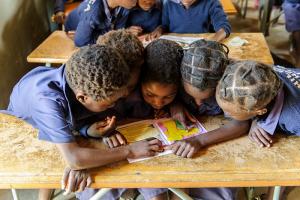
So in an attempt to have personal encounters with illiteracy, to develop an understanding I admittedly lack, I looked up literacy programs in my area for the purpose of considering what I, a solo person (who loves to read), could do to contribute to raising the literacy level of my hometown region, even if only by one or two individuals. I took a volunteer orientation class, an introductory evening of training to be followed by in-depth literacy tutor training this coming season. My $40 registration fee also bought the substantial workbook Teaching Adults: An ESL Resource Book, which I am reading. This, of course, deals with teaching those who are illiterate in writing and reading English. What gift could be more wonderful than coaching an eager English-language learner in the intricacies of speaking and writing English as a second language?
My husband and I live in the far western suburbs of Chicago. Our town is 52 percent non-white, mostly Hispanic. I can only relate to the immigrant experience of not knowing the language of an adopted country—e.g., not knowing how to read the road signs or the newspapers or the graphics that crawl across a television screen—by the times I have been plunged into a foreign culture overseas. Then I attempt to extrapolate those small and temporary situations into a lifetime of confusion due to the inability to read or write.
Obviously, knowing I would soon be returning home, or having a translator and guide shepherd me through the incomprehensible language and customs of a foreign country, renders these plunges only superficial. Due to our high Spanish-language speaking population, however, I run into literacy issues frequently enough—my own lack of Spanish-speaking facility as well as others’ lack of English comprehension. For instance, the name of the Lyft driver often sent to our door for a trip to the airport is Mariana. She makes sure we know she speaks “only little English.” I inevitably worry that she will take us to the wrong airport, but somehow, through a translation dispatcher system, we have so far been delivered to O’Hare or to Midway when needed.
After my hairstylist’s departure to another state, I determined I would be part of the “new localism”—the grassroots effort of supporting the businesses and shops established by local entrepreneurs. “Oh, Lord,” I prayed. “Help me to find a decent stylist.” I walked into a hair salon in downtown West Chicago. There were five chairs and one person in the shop. “Do you cut hair?” I asked. “Si, si,” the woman responded. “Speak little English. Un pocito.”
“OK, OK,” I said, and signed an inch with my thumb and forefinger. “One inch off. All over.” Which is exactly what she did. She cut my hair one inch long all over my head. Without a doubt, it has been the easiest summer hairdo I have ever had. I wash it. Apply mousse. Then mess my hair up as it dries. No problem. But the experience gave me a baseline to imagine if every day and in every way these gaffes large and small would be part of the agony and effort of living. After time, one might just withdraw, choose silence, stop trying.
Literacy — One of the Great Miracle Cures: Part 1 | Part 3
This Special Report article originally appeared on GFA.org.
Learn more about the Women’s Literacy Program, and how you can help over 250 million women in Asia who are illiterate.
Click here, to read more blogs on Patheos from Gospel for Asia.
Learn more about Gospel for Asia: Facebook | YouTube | Instagram | Sourcewatch | Integrity | Lawsuit Update | 5 Distinctives | 6 Remarkable Facts | Media Room | Poverty Solutions | Endorsements | 40th Anniversary | Lawsuit Response |


